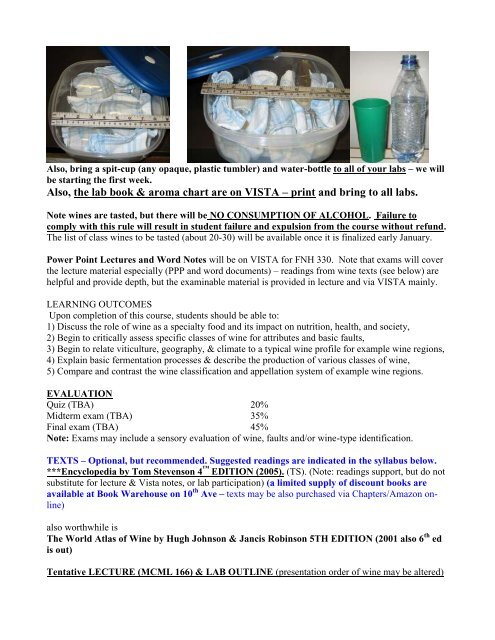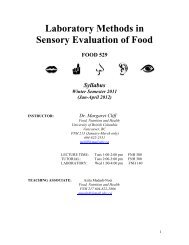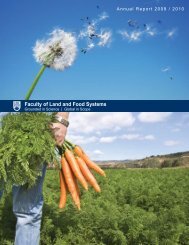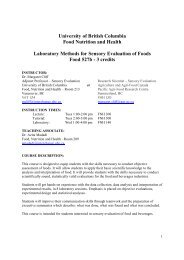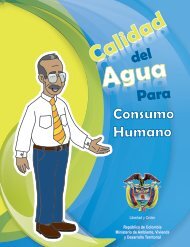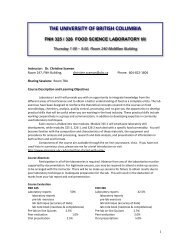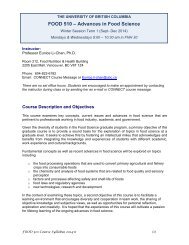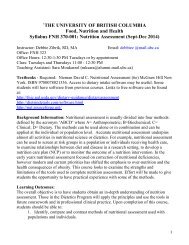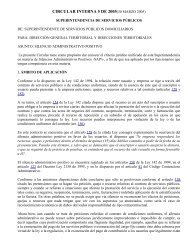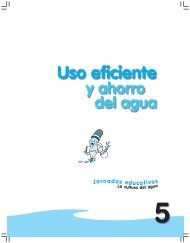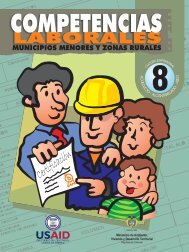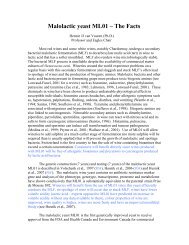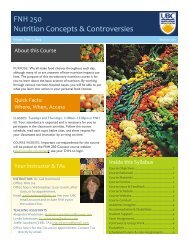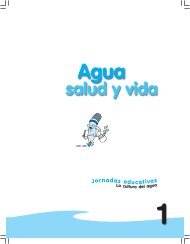Dear Brenda, First, I thank you for the many wine maps and ...
Dear Brenda, First, I thank you for the many wine maps and ...
Dear Brenda, First, I thank you for the many wine maps and ...
You also want an ePaper? Increase the reach of your titles
YUMPU automatically turns print PDFs into web optimized ePapers that Google loves.
Also, bring a spit-cup (any opaque, plastic tumbler) <strong>and</strong> water-bottle to all of <strong>you</strong>r labs – we willbe starting <strong>the</strong> first week.Also, <strong>the</strong> lab book & aroma chart are on VISTA – print <strong>and</strong> bring to all labs.Note <strong>wine</strong>s are tasted, but <strong>the</strong>re will be NO CONSUMPTION OF ALCOHOL. Failure tocomply with this rule will result in student failure <strong>and</strong> expulsion from <strong>the</strong> course without refund.The list of class <strong>wine</strong>s to be tasted (about 20-30) will be available once it is finalized early January.Power Point Lectures <strong>and</strong> Word Notes will be on VISTA <strong>for</strong> FNH 330. Note that exams will cover<strong>the</strong> lecture material especially (PPP <strong>and</strong> word documents) – readings from <strong>wine</strong> texts (see below) arehelpful <strong>and</strong> provide depth, but <strong>the</strong> examinable material is provided in lecture <strong>and</strong> via VISTA mainly.LEARNING OUTCOMESUpon completion of this course, students should be able to:1) Discuss <strong>the</strong> role of <strong>wine</strong> as a specialty food <strong>and</strong> its impact on nutrition, health, <strong>and</strong> society,2) Begin to critically assess specific classes of <strong>wine</strong> <strong>for</strong> attributes <strong>and</strong> basic faults,3) Begin to relate viticulture, geography, & climate to a typical <strong>wine</strong> profile <strong>for</strong> example <strong>wine</strong> regions,4) Explain basic fermentation processes & describe <strong>the</strong> production of various classes of <strong>wine</strong>,5) Compare <strong>and</strong> contrast <strong>the</strong> <strong>wine</strong> classification <strong>and</strong> appellation system of example <strong>wine</strong> regions.EVALUATIONQuiz (TBA) 20%Midterm exam (TBA) 35%Final exam (TBA) 45%Note: Exams may include a sensory evaluation of <strong>wine</strong>, faults <strong>and</strong>/or <strong>wine</strong>-type identification.TEXTS – Optional, but recommended. Suggested readings are indicated in <strong>the</strong> syllabus below.***Encyclopedia by Tom Stevenson 4 EDITION (2005). (TS). (Note: readings support, but do notsubstitute <strong>for</strong> lecture & Vista notes, or lab participation) (a limited supply of discount books areavailable at Book Warehouse on 10 th Ave – texts may be also purchased via Chapters/Amazon online)also worthwhile isThe World Atlas of Wine by Hugh Johnson & Jancis Robinson 5TH EDITION (2001 also 6 th edis out)Tentative LECTURE (MCML 166) & LAB OUTLINE (presentation order of <strong>wine</strong> may be altered)


